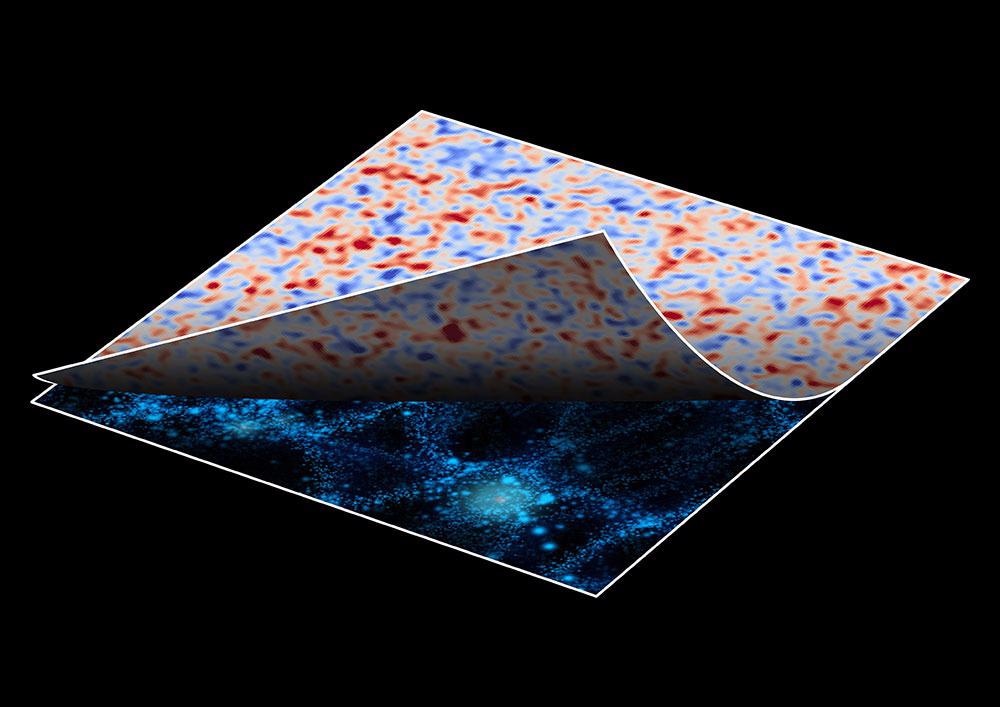A new artificial intelligence (AI) method has been developed by Japanese astronomers to eliminate noise in astronomical data caused by random changes in galaxy shapes.
 Artist’s visualization of this research. Using AI-driven data analysis to peel back the noise and find the actual shape of the universe. Image Credit: The Institute of Statistical Mathematics.
Artist’s visualization of this research. Using AI-driven data analysis to peel back the noise and find the actual shape of the universe. Image Credit: The Institute of Statistical Mathematics.
Following thorough training and testing on huge mock data made by supercomputer simulations, the researchers applied this new tool to real data obtained from Japan’s Subaru Telescope.
Thus, they discovered that the mass distribution calculated through this technique holds well with the currently accepted models of the universe. This is a robust new tool for examining big data from present and scheduled astronomy surveys.
Researchers can use extensive area survey data to study the large-scale structure of the universe via measurements of gravitational lensing patterns. When it comes to gravitational lensing, the gravity of a foreground object, such as a cluster of galaxies, can distort the image of a background object, like the farthest galaxy. Certain examples of gravitational lensing are evident, for example, the “Eye of Horus.”
The large-scale structure includes mostly enigmatic “dark” matter and can cause distortion in the shapes of faraway galaxies as well, but the anticipated lensing effect is delicate. Therefore, it is essential to average over several galaxies in an area to make a map of foreground dark matter distributions.
However, this method of analyzing several galaxy images poses many hurdles; certain galaxies are just a bit funny looking. It is hard to differentiate between a galaxy image distorted by gravitational lensing and a really distorted galaxy. This is known as shape noise and is one of the restricting factors in studies that analyze the large-scale structure of the universe.
To tackle the shape noise, a group of Japanese astronomers initially made use of ATERUI II, the world’s most robust supercomputer committed to astronomy, to produce 25,000 mock galaxy catalogs using real data from the Subaru Telescope. Then, realist noise was added to such perfectly familiar artificial data sets and an AI was trained to statistically retrieve the lensing dark matter obtained from the mock data.
As soon as the AI was trained, it could retrieve fine details that were unnoticeable earlier on, thereby enhancing the insights into the cosmic dark matter. Then, the researchers used AI on real data covering around 21 square degrees of the sky and discovered a distribution of foreground mass that was consistent with the standard cosmological model.
This research shows the benefits of combining different types of research: observations, simulations, and AI data analysis. In this era of big data, we need to step across traditional boundaries between specialties and use all available tools to understand the data. If we can do this, it will open new fields in astronomy and other sciences.
Masato Shirasaki, Team Leader, National Institute of Natural Sciences
Journal Reference:
Shirasaki, M., et al. (2021) Noise reduction for weak lensing mass mapping: an application of generative adversarial networks to Subaru Hyper Suprime-Cam first-year data. Monthly Notices of the Royal Astronomical Society. doi.org/10.1093/mnras/stab982.